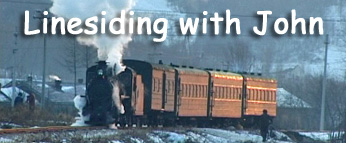

Final day now added.
Exploring the Irish Narrow Gauge Peat Railways operated by Bord na Mona and private contractors
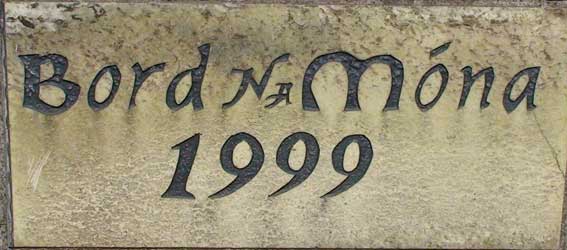
I have now added an overview.
23 May 2010
As it was Sunday with no rail traffic expected on the bogs we headed for the local preserved line - the Cavan & Leitrim Railway at Dromod. Although we arrived early (opening hours are 1 - 5 on Sunday), the site owner Michael Kennedy welcomed us and showed us round. Although the steam loco boiler certificate has expired and the railway only runs about 1/2 mile at present, this is a fascinating site at the end (coal transhipment point) of a famous Irish narrow gauge railway (3ft gauge). Michael and friends have collected a vast array of historical railway, road, air and military items which they are restoring as time, money and man-power allows.
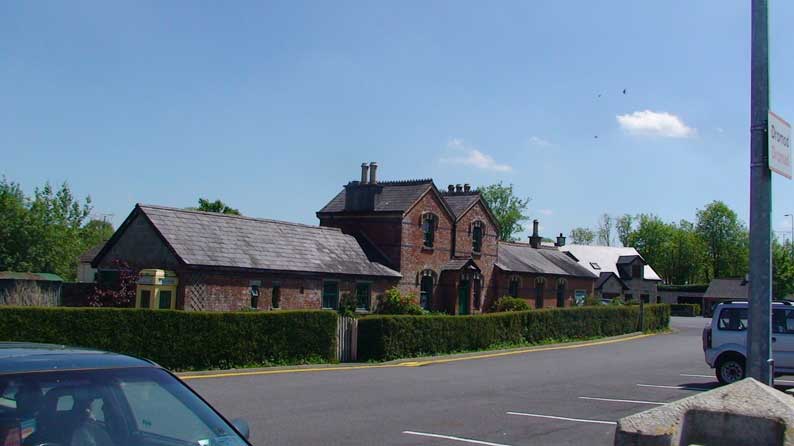
Former Dromod station on the Cavan & Leitrim Railway
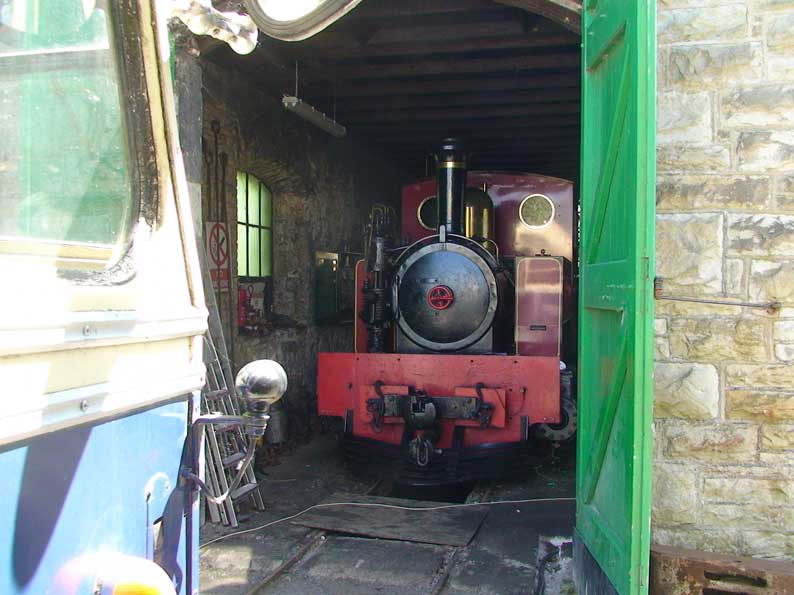
The steam loco Dromod came from Scotland via Alan Keef
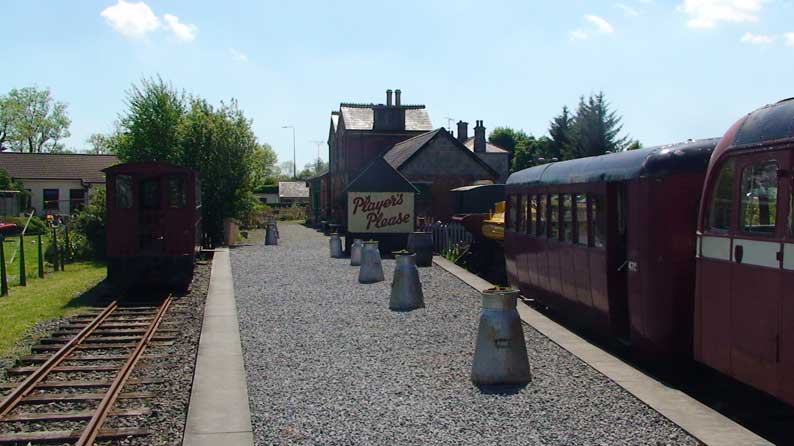
The regular train is on the left and the two spare carriages are on the right.
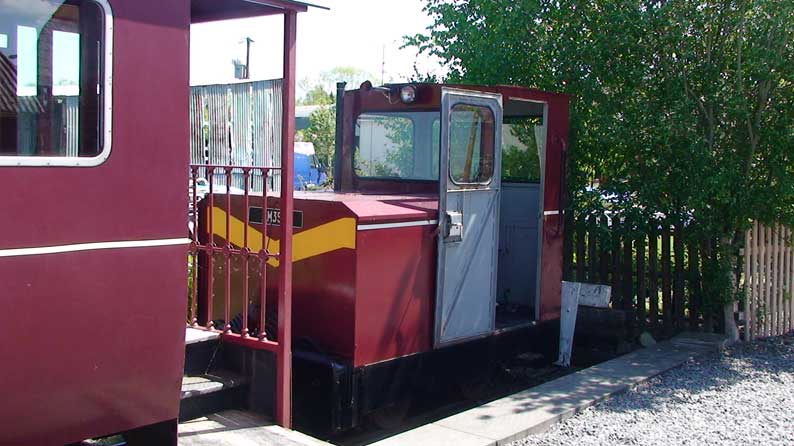
Rebuilt Simplex LM350 ex-Bord na Mona is the regular train engine.
24 May 2010
Today we visited Klasmann-Deilmann Ireland (formerly Midland Irish Peat), Coolnagun (not working as it supplies the Loch Rea Power Station on the Mountdillon system), Ballivor and an overbridge on the Edenderry system.
Klasmann-Deilmann has some interesting locos:
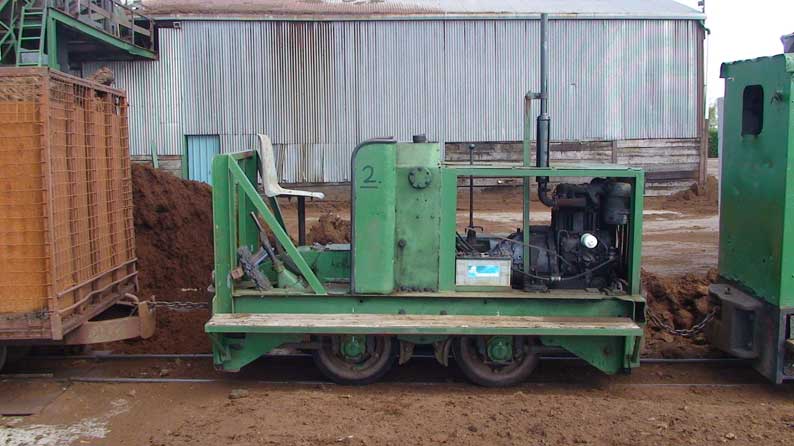
Ransom & Rapier loco

complete with rubber tyres
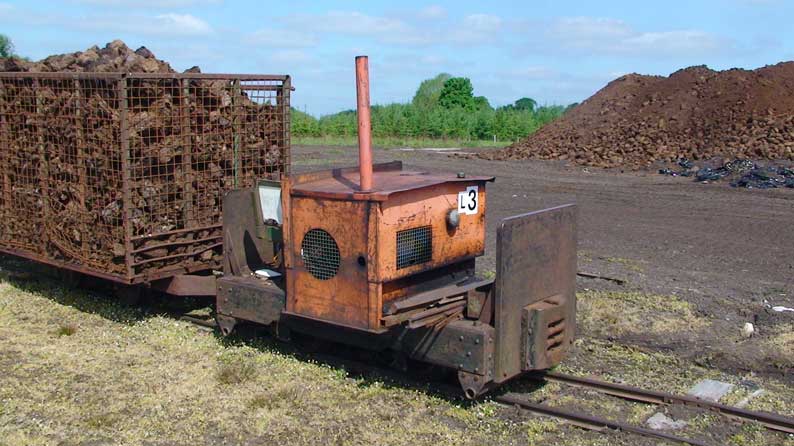
Heavily converted Motor Rail Simplex with sod peat wagon
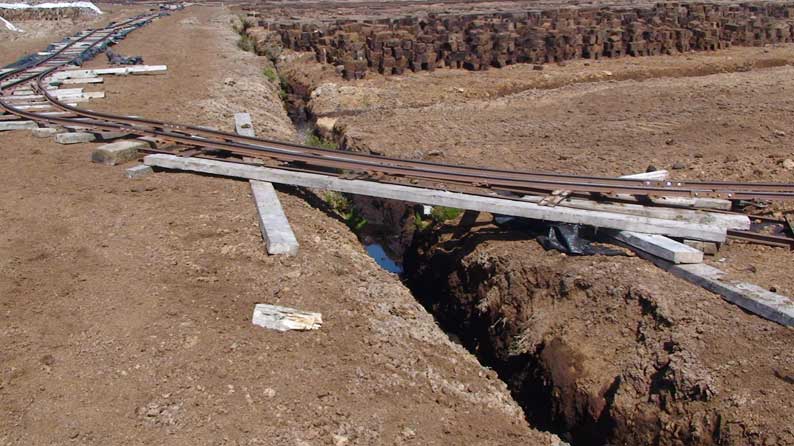
We saw some PW work here and noted this temporary track on a bridge has similarities with Javan sugar lines.
Ballivor provided a pleasant surprise in the form of 2 newly-modified Hunslet Wagonmaster 0-4-0DH locos. I like the original Wagonmaster, can tolerate the 4wDH versions but love these 'new' machines.
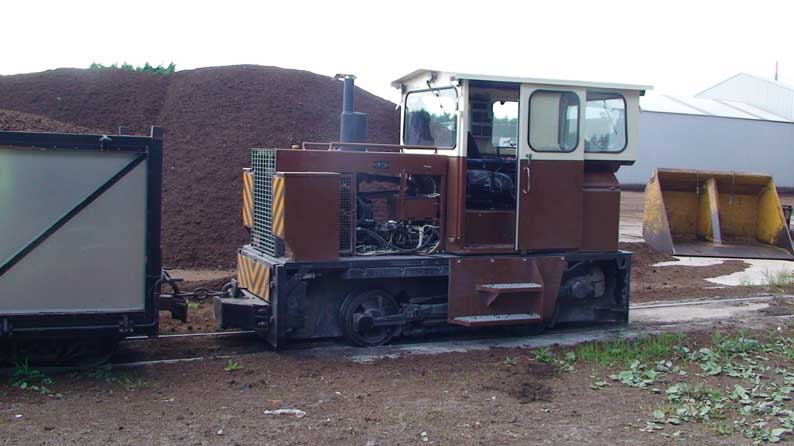
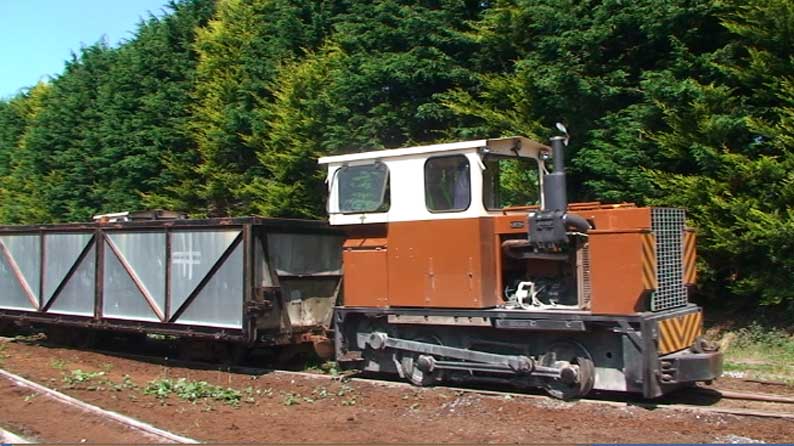
These locos look even better on video with the rods moving and the sanders in action.
25 May 2010
Today we visited Bellair, Derrinlough Briquette Factory and Boora Works. The peat trains from Bellair are heading for Shannonbridge 20 miles away. En route they go through a new cutting.
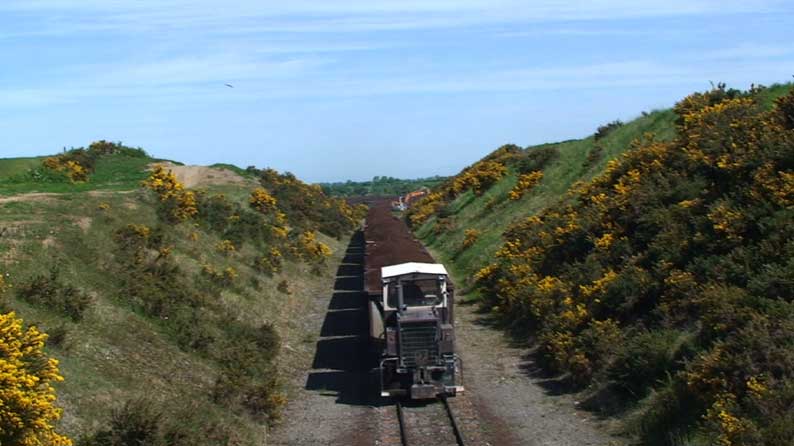
We missed them crossing onto Blackwater Bog as we got impatient. They take a bit longer than you would think owing to the route they take. At the briquette factor we got an escorted tour and 2 departures of empties.
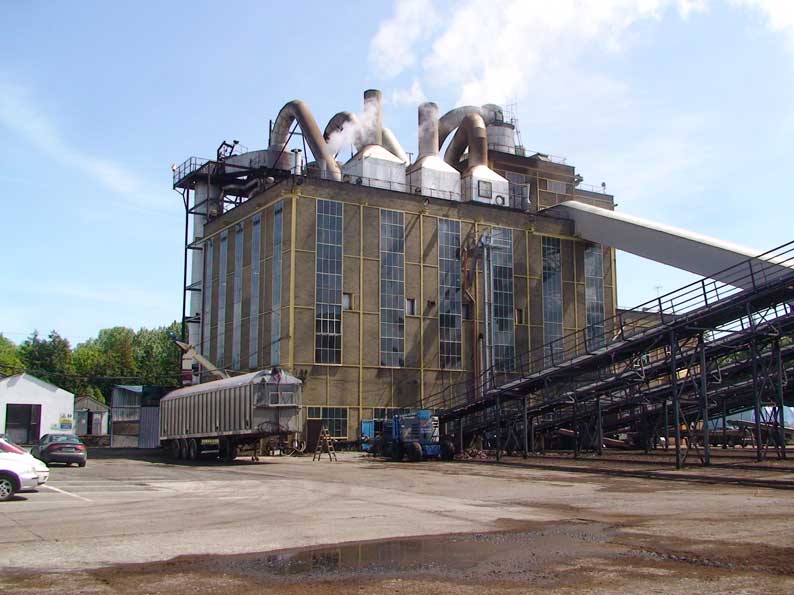
Derrinlough Briquette Factory which is 50 years old.
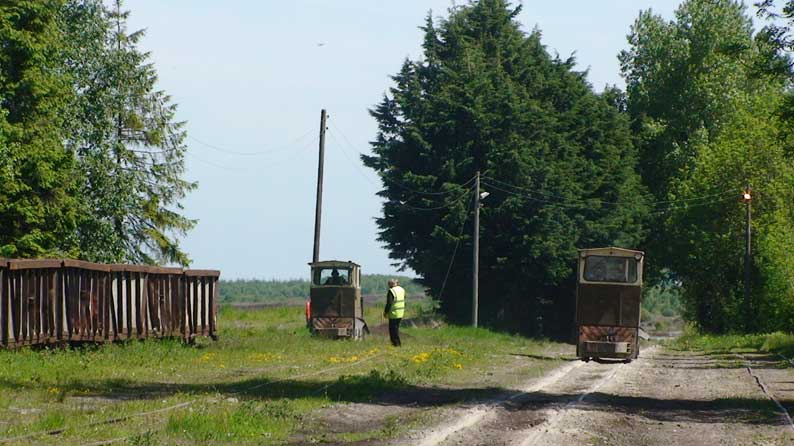
On, then, to Boora where Bord n Mona have beautified the old bog (now part of the long distance Offaly Way walking path) including some large sculptures of which this one is railway related.

Boora Works is rebuilding Wagonmasters and the latest batch retain their rod drive.
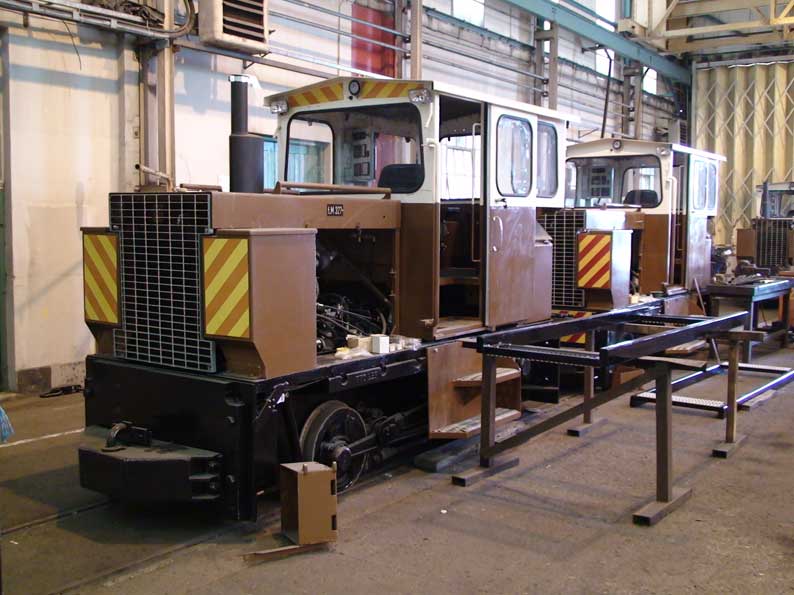
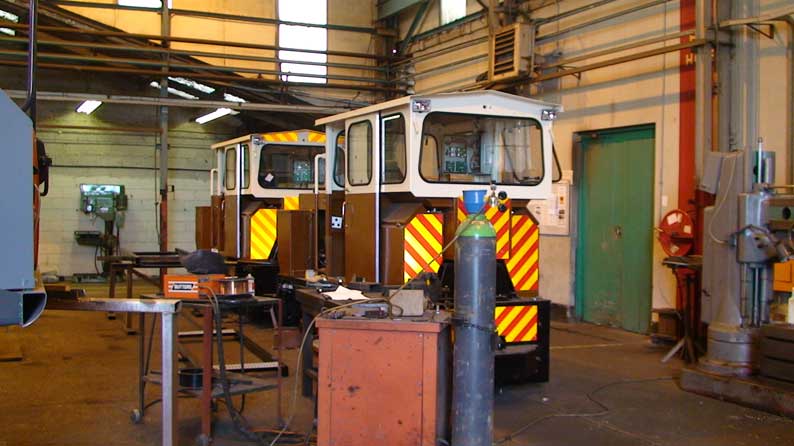
In the next shop are old Wagonmasters being stripped down.
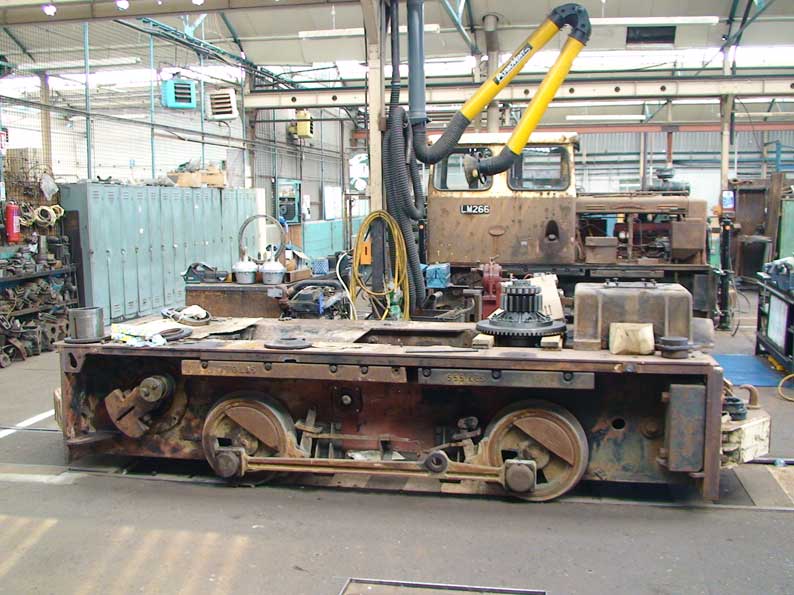
On the bog at Bellair, we surprised a pair of wild goats and this one posed for a shot.

26 May 2010
Today we met up with Ted McAvoy and his wife Sue. Ted is preparing a book for Oakwood Press on Bord na Mona which he is due to hand over by the end of the year. Ted had provided us with very useful information about the Bord na Mona locations and it was a pleasure to meet him and his wife at Monettia bog. We saw a loaded rake arrive as well as a service train but then it was all over there as there were no spare empty wagons and only 2 trucks to load. We headed for Coolnamona which is now a quiet system since it gave up a B&Q horticultural compost contract. We found this Wagonmaster stuck out at a service station unable to start. This gave me a chance to photograph all its plates:
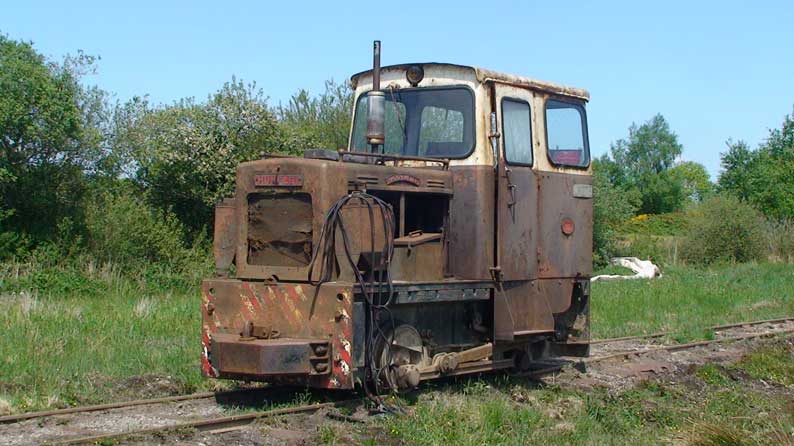
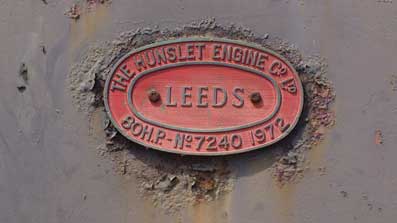
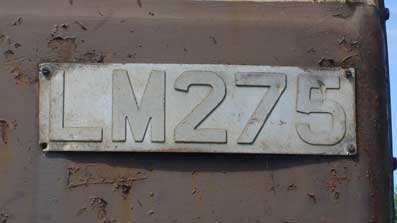

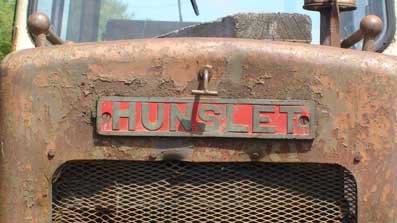
The dump area at Coolnamona also allows me to show the difference between the track gauge and the loading gauge for the rough peat wagons here. Other wagons are probably slightly less wide.

Rail gauge 3ft, loading gauge 9ft?
As a final visit of the day, we returned to Croghan tippler to just miss the Ruston there do a shunt before end of shift. There were no trucks around waiting to load so we headed for home.
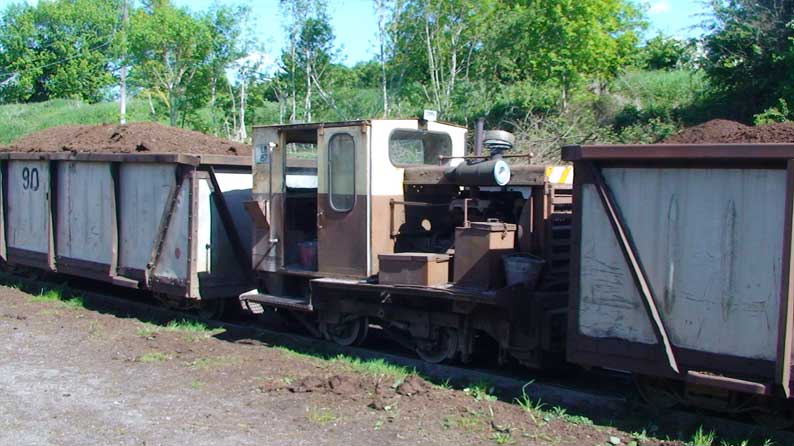
27 May 2010
We returned to Attymon and as there was some rain in the air, the jack-of-all-trades on site decided that he ought to move the loads of sod peat under the covers. It was done for our benefit but all totally real. He would probably have had to done it later in the day anywhere. The loco used was the windowless, seatless Ruston No. 4.
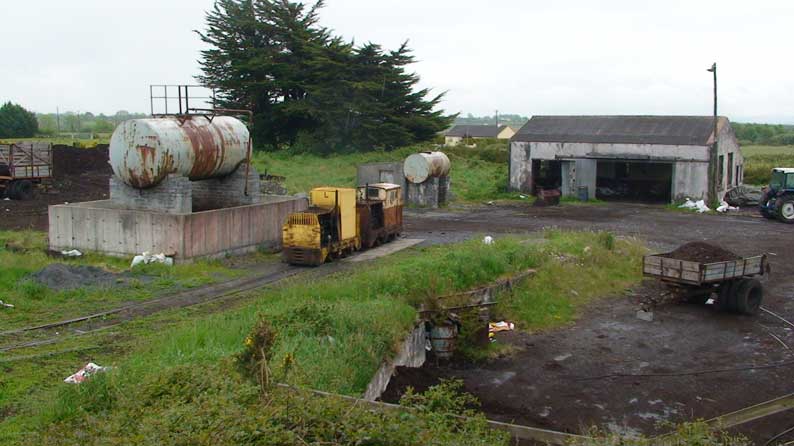
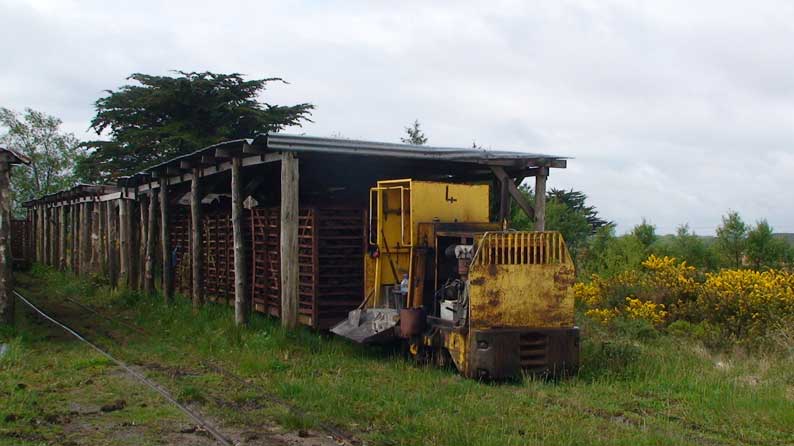
We moved to the bogs south of the Shannon on the Blackwater system to see the line through the old canal lock at Kylemoor Bridge. We didn't see any trains here but the lock is of interest. That's my travelling companion Mike Jackson in the second shot.
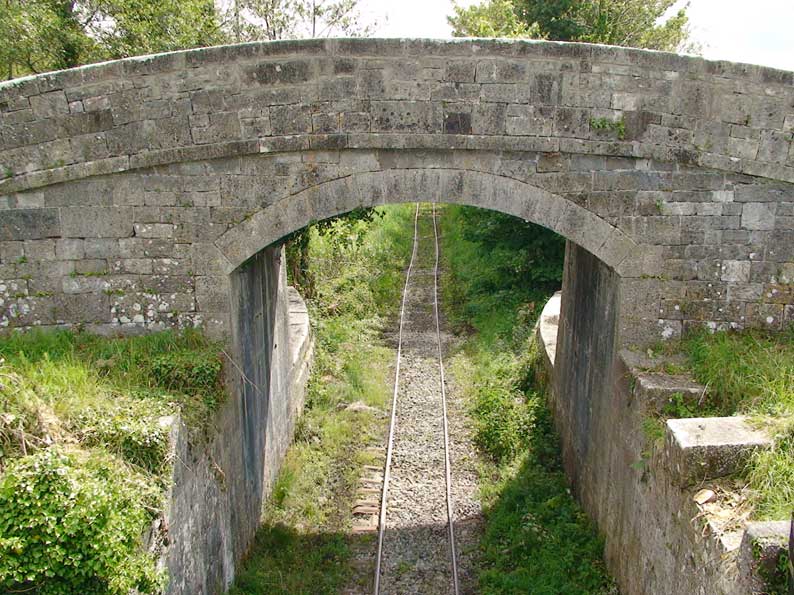
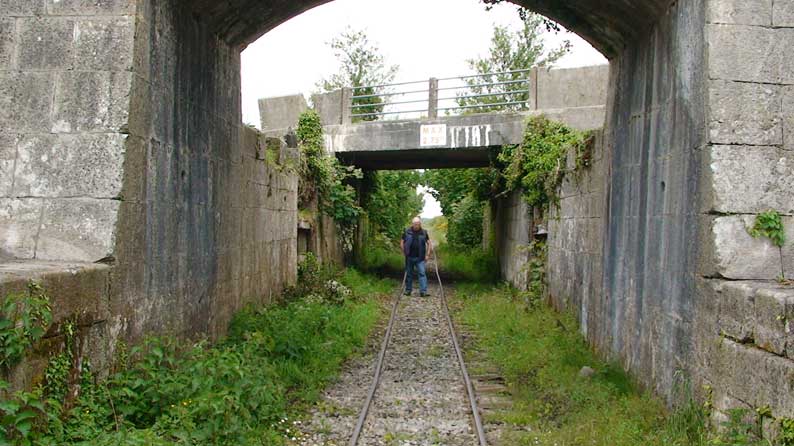
While looking for trains, we visited the junction for the trains from north of the Suck River and the canal lock branch. Here we found the Wagonmaster painted up for the former tourist train.

We found an even wider wagon than yesterday - used for moving plant around.
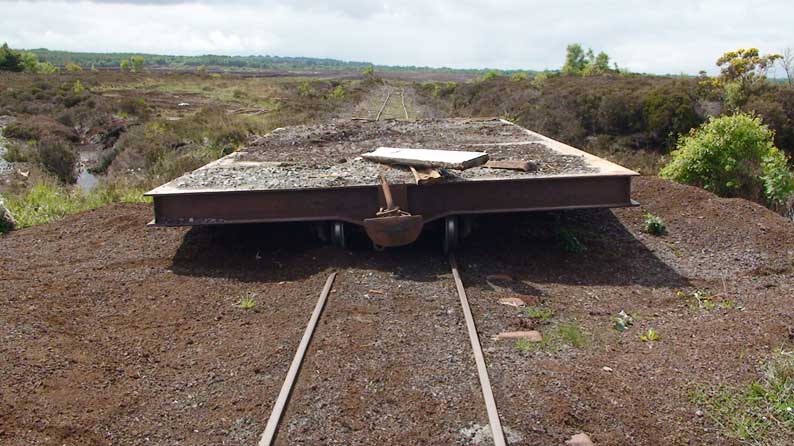
Given the track is 3ft, what is the width of the wagon? 12ft?
We also found lots of sundew.
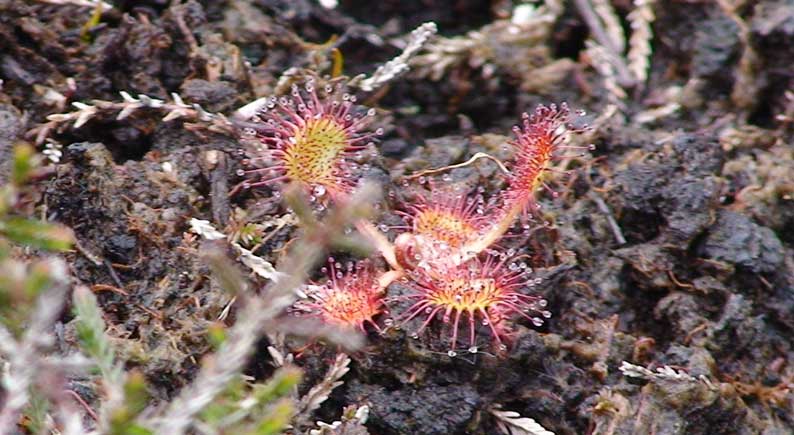
Our final visit was to Clonfort North and just south of the Shannon rail bridge. We missed the peat trains but saw this pw train.


We return to the UK tomorrow but not until the evening ferry so there may be one more addition to the blog if we find anything interesting.
28 May 2010
On our way to the ferry, we visited Rossan (near Kinnegad), Gilltown, Almhain North (on the Bog of Allen) and Ummeras. We caught a bit of action at all but Ummeras were work had stopped (possibly for the day) and we saw no-one around. Gilltown was a very efficient operation. One loco was bringing in milled peat and the other was working the tippler. The shunter driver was also operating the tippler. The first picture of a Ruston on a pw train against a big sky was taken there.
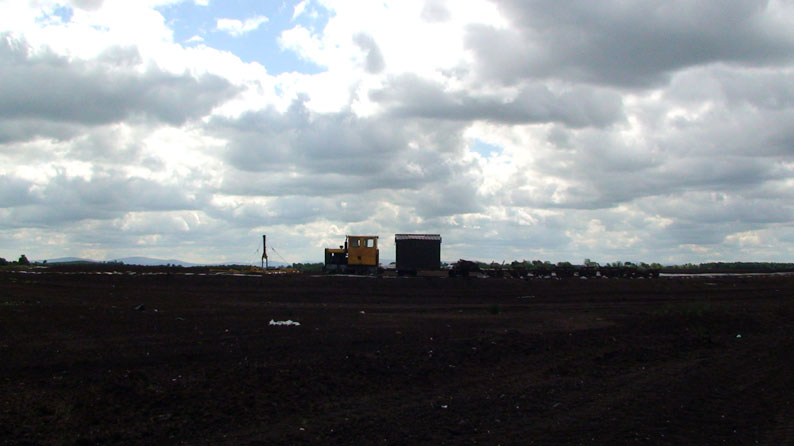
They had a derailment at Almhain North and we watched two men and a tractor put everything back on the rails. Finally, at Ummeras, another Ruston which works the tippler was well posed for a final shot.
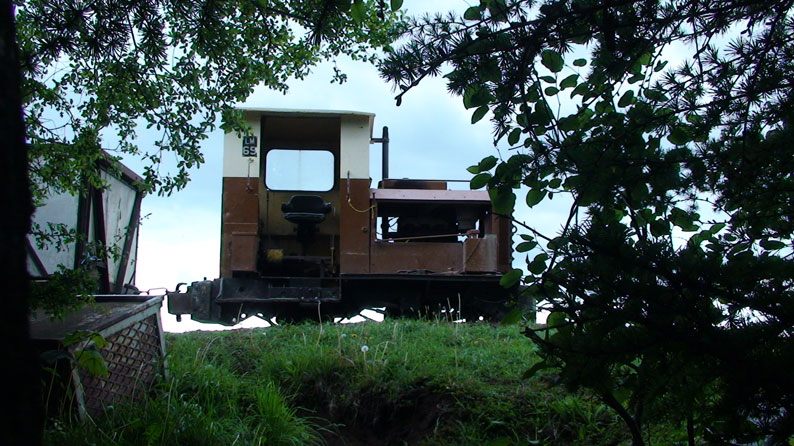
The Peat Blog is now complete.
Go to the Peat Blog first page.
Contact John Raby:
![]()
This is not a hotlink. You need to type this address into the 'To' line of your email.
Go to my index page.